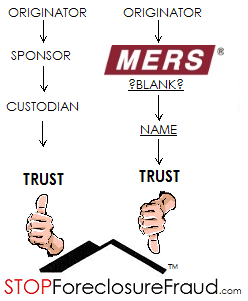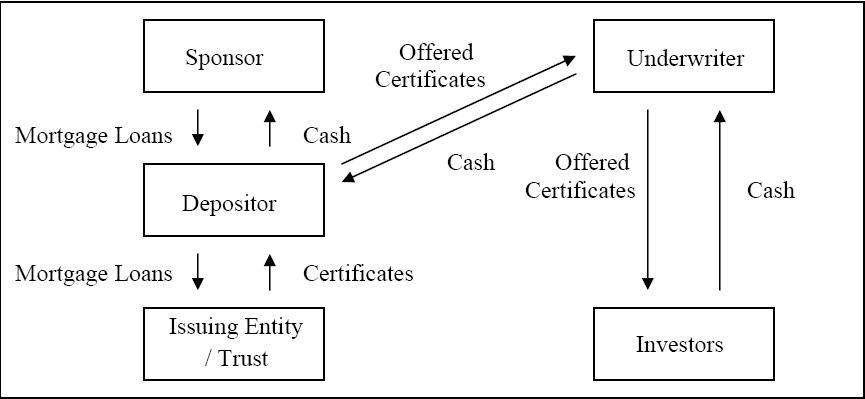Make sure you read this carefully…This is a transcript of an employee of Residential Funding Company who is in charge of record keeping of original documents. Don’t miss the full deposition down below.
Follow the assets, don’t get lost in the trail…
17 Q. Now, when you said you’re the Director of
18 Records Management for the Minnesota office?
19 A. Uh-huh.
20 Q. Are there other offices of Residential
21 Funding that maintain records that you are
22 not responsible for?
23 A. There are records services sites in Iowa and
24 in Pennsylvania. Those deal mostly with the
25 GMAC mortgage assets.
<snip>
11 Q. And what, if anything, is your responsibility
12 with regard to those records?
13 A. To track the physical paper for those
14 assets — or that asset.
15 Q. Are you what you consider to be the keeper of
16 the records for those documents?
17 A. Sure, yep.
5 Q. Okay. And then when somebody wants to view
6 specific records from your system, is that
7 something that you’re responsible for
8 obtaining as part of your day-to-day
9 responsibilities?
10 A. The people that report to me, yes, or the
11 vendor that — that we have retained to do
12 those functions, yes. I don’t do that
13 myself.
14 Q. Who’s the vendor that you retain to do that?
15 A. A company called ACS.
16 Q. ACS?
17 A. Yep.
18 Q. And what does ACS do with regard to the
19 records?
20 A. They fulfill the request. So if somebody
21 needs a credit folder or a legal folder, they
22 research where those documents are, obtain
23 the documents and then provide that requestor
24 with either the paper documents or images.
<snip>
21 Q. There’s a file folder that shows it came from
22 the outside vendor?
23 A. Yes. Their sticker is affixed to the front
24 of the folder, so I know it came from them.
25 Q. Okay. And then is there anything on the
1 documents themselves that show where they
2 came from?
3 A. No.
4 Q. And by the outside vendor, do you mean ACS?
5 A. No. Actually, the vendor that stores the
6 actual folder is Iron Mountain.
7 Q. So there’s a sticker on that file that shows
8 it came from Iron Mountain?
9 A. Correct, yes.
10 Q. Does Iron Mountain maintain your system or do
11 they just maintain hard copies of documents?
12 A. They maintain the hard copies of the
13 documents.
14 Q. Not any records on your computer system,
15 correct?
16 A. No.
17 Q. Is that correct?
18 A. Correct.
<snip>
18 Q. What’s the relationship between Residential
19 Funding Company, LLC and U.S. Bank National
20 Association?
21 A. In — in this instance, U.S. Bank is the
22 trustee on the security that this loan is in.
23 And RFC was the issuer of the security that
24 was created.
25 Q. Who was the issuer of the security?
1 A. RFC was the issuer of the security.
2 Q. Oh, RFC is what you call Residential Funding
3 Company?
4 A. Yes.
5 Q. So RFC issued the security?
6 A. Right.
7 Q. Can you explain to me what that means?
8 A. No, I can’t.
9 Q. Okay. How do you know RFC issued the
10 security?
11 A. It’s the normal course of business as to how
12 our — our business works. RFC is in the
13 business of acquiring assets and putting them
14 together into securities to sell in the — in
15 the market.
16 MR. SHAW: I would like to
17 register a general objection to this line of
18 questioning. There’s not been a foundation
19 laid for Judy Faber being competent to reach
20 some of these conclusions that are being
21 stated on the record.
22 BY MR. HOLLANDER:
23 Q. So in this particular instance, do you have
24 any personal knowledge of the relationship
25 between RFC and U.S. Bank National
1 Association as trustee?
2 A. No.
3 Q. For whom is U.S. Bank National Association
4 acting as the trustee?
5 A. I believe it would be for the investors of
6 the — that have bought the securities.
7 Q. I’m sorry. Something happened with the phone
8 and I didn’t hear your answer. I’m sorry.
9 A. I believe it would be for the different
10 investors who have bought pieces of that
11 security that was issued.
12 Q. Are there different investors that have
13 purchased the Peter Cook note?
14 A. I don’t think I’m qualified to answer that.
15 You know, I can tell you from what my basic
16 understanding is from the process, but I’m
17 not an expert.
18 MR. SHAW: Once again, I’d like to
19 raise a continuing general objection that she
20 being — testifying with respect to what her
21 job is, and I believe you’re getting into
22 areas that is other than what her job is and
23 you’re asking for possibly even legal
24 conclusions here. So I would like to raise
25 that objection again.
[…]
[ipaper docId=39156662 access_key=key-hxfsobk1503f3iza8sn height=600 width=600 /]
© 2010-19 FORECLOSURE FRAUD | by DinSFLA. All rights reserved.












Recent Comments